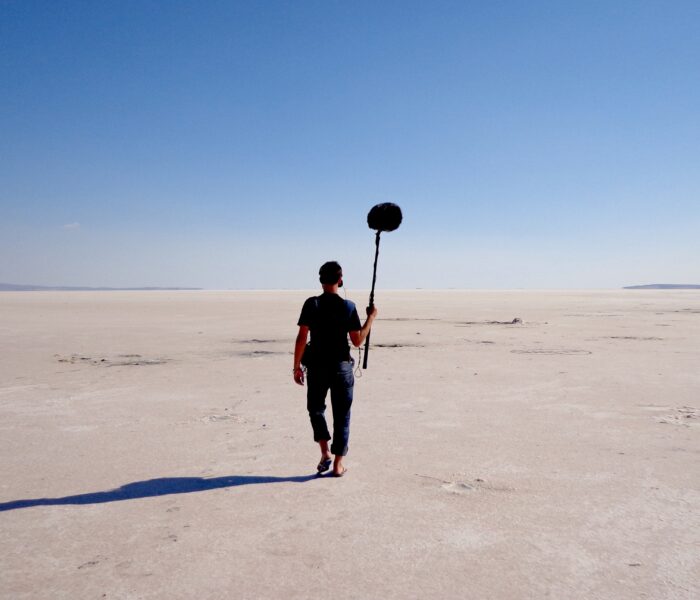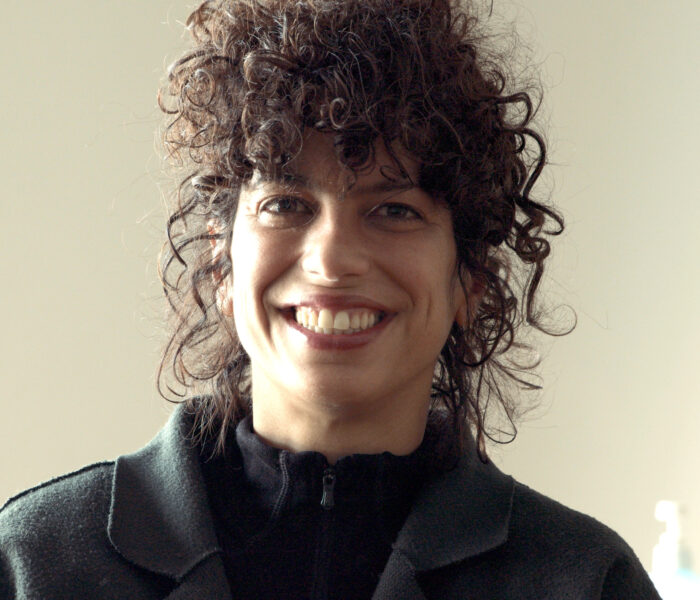Depuis plus de cinquante ans, ce pianiste ukrainien essaime le monde d’un déluge de notes jouées à toute vitesse donnant naissance à ce style dont il est le seul maître : la musique continue. Quelques clés d’écoute pour aborder la foisonnante œuvre de ce musicien qui ne laisse pas indemne.
La guerre en Ukraine a tristement levé le voile sur tout un tas de musiciens oubliés ou sous-estimés. Le sentiment mondial de compassion a donné naissance à une juste re-évaluation du patrimoine musical ukrainien. Très actif sur Twitter et Youtube, Lubomyr Melnyk n’a pas été en reste prenant de courageuses prises de position et ce depuis plusieurs années d’ailleurs. Malheureusement la musique de Melnyk ne bénéficie pas encore des regards critiques sérieux. Sa place dans le paysage musical contemporain est un peu à part, minimaliste sentimental pour certains ou simple virtuose pour d’autres. Seul constat : il remplit plus aisément la Gaîté Lyrique à Paris ou l’Ancienne Belgique à Bruxelles que l’Auditorium de Lyon ou la Philharmonie de Berlin.
Les vidéos de Lubomyr Melnyk génèrent des milliers voire des millions de vues mais une particulièrement l’a révélé au grand public. Celle où on le voit jouer devant les caméras de la BBC à une rapidité peu commune des arpèges améliorés, truffés de notes accidentelles formant une mélodie, longue, planante et incessante. Et dans cette vidéo deux records sont battus : celui du pianiste le plus rapide au monde (avec plus de 19 notes par seconde dans chaque main) et celui du plus grand nombre de notes en une heure : Melnyk parvient à maintenir une vitesse de 13 notes par seconde simultanément aux deux mains, produisant un total remarquable de 93 650 notes! Voilà pour les amoureux des records et des sons continus.
Continu.
Le mot est lâché. Ce terme, Lubomyr Melnyk y tient plus que tout. Voici ce qu’il me répond lorsque je l’interroge à l’occasion de cette chronique : « La musique continue est née à l’Opéra de Paris en 1973. J’étais affamé et dévoué au piano… une bonne combinaison!… et je jouais du piano pour les ateliers magiques de danse moderne de Carolyn Carlson dans le grenier de l’Opéra de Paris. Il y avait alors un besoin de créer une « salle de son » avec des murs et des sols pour que les danseurs puissent travailler – une salle spirituelle de son – et cette salle devait être continue pour que les 20 danseurs puissent y travailler un par un. Je voulais faire avec mes 10 doigts, les mêmes effets que ceux des compositeurs américains qui utilisaient 15 musiciens. C’est ainsi qu’est née la musique continue. Elle est un jalon dans l’histoire du piano! C’est définitivement une technique de piano radicalement nouvelle. Elle doit être apprise, étudiée, et nécessite des années de dévotion avant que vous puissiez vraiment jouer! Il m’a fallu 40 ans pour devenir un Maître, où il y a une transcendance du corps physique dans des dimensions plus profondes. La Musique Continue modifie en fait la chair du corps, tout comme le Taï Chi et le Kung Fu modifient le corps du Maître. Mais dans le cas de la musique continue, le changement se produit davantage au sein de la musique… et des mains au piano. Les plus grands pianistes classiques du monde ne pourront jamais jouer les morceaux avancés que je joue parce qu’ils n’ont que la technique classique, avec son emphase sur le travail des doigts. Dans la musique continue, le pianiste va bien au-delà des doigts pour obtenir des mouvements rapides et légers et une pensée multidimensionnelle! En fait, TOUTES les autres techniques pianistiques, classiques, rock, etc. sont toutes basées sur les doigts. La musique continue n’utilise pas du tout les doigts… elle est totalement basée sur l’énergie et passe par le poignet. » Voilà pour l’Histoire, la défense et l’illustration de la musique continue.
Son premier disque, KMH (titre volontairement aussi cryptique qu’une plaque d’immatriculation) est un concert privé donné en 1978 à Toronto. Cet enregistrement, devenu une rareté recherchée, est un moment unique, proprement stupéfiant. Durant près de cinquante minutes, Melnyk nous submerge de notes d’une clarté éblouissante comme s’il souhaitait nous assommer. Une fois entré dans cet univers qui demande une certaine attention, on peut se laisser envahir par cette douche sonore. Sûrement l’un de ses meilleurs disques, en tout cas le plus emblématique de la musique continue.
Outre une certaine propension à vanter (à juste titre) les mérites de cette nouvelle technique musicale et pianistique, Lubomyr Melnyk a raison d’insister sur le côté physique de sa musique : voir ce musicien au piano relève des moments musicaux qu’on n’oublie pas. Une telle implication, une souplesse technique hors du commun et un lyrisme si exacerbé ne peuvent que convaincre. Une vidéo datant de 1982 à Toronto le montre au meilleur de sa forme (34 ans) brasser inlassablement des arpèges de haut en bas à toute vitesse en changeant subrepticement, une note ou deux et en modulant chromatiquement petit à petit. On entend ces résonances – dont lui seul a le secret – s’entrechoquer et se répondre. Tout l’art de Melnyk est dans cette petite vidéo amateur.
Né de parents Ukrainiens à Munich en 1948 ses parents s’installent au Canada au début des années 1950 afin de fuir le communisme. « J’ai commencé à jouer quand j’avais 3 ans, ma mère et sa sœur étaient des chanteuses de formation, et nous avions un piano à la maison – même si nous étions des immigrants très pauvres à l’époque – parce que la musique était très importante pour ma mère. Et quand elle a vu que je composais de la musique au piano, elle m’a fait prendre des leçons – ce que je détestais – mais bientôt, je commençais à aimer de plus en plus … jusqu’à ce que cet instrument devienne ma vie et mon souffle. J’ai reçu une formation classique, bien sûr! Où peut-on obtenir une telle formation technique et de telles connaissances? J’ai suivi le travail de conservatoire de niveau normal et j’ai terminé en jouant les difficiles sonates pour piano de Beethoven. J’ai toujours aimé la musique de Beethoven par-dessus tout mais j’avais un amour spécial pour son Troisième Concerto pour piano que j’ai écouté peut-être 300 fois… » C’est en voyage à Paris qu’il rencontre la chorégraphe Carolyn Carlson et qu’il met au point sa fameuse technique continue. Il en sortira même un ouvrage théorique : Open Time : The Art of Continuous Music. C’est donc grâce à la danse – si étroitement liée à la musique depuis la nuit des temps – que Melnyk s’est trouvé. Il ne cessera jamais de collaborer avec différents chorégraphes.
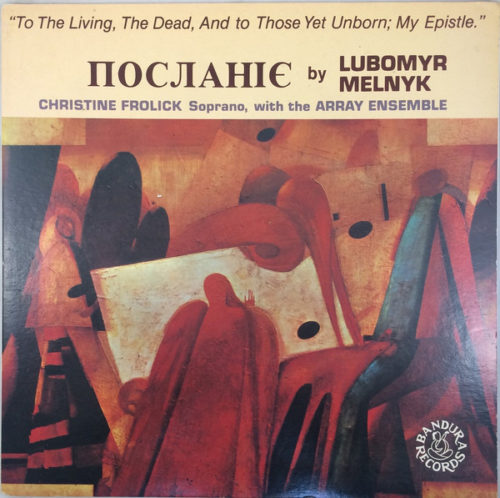

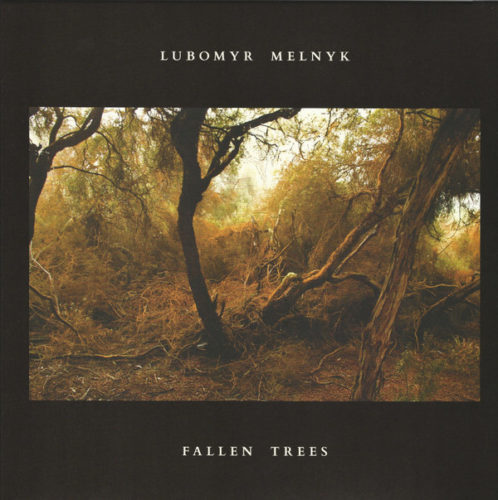
Aujourd’hui en 2022, il vit en Suède et s’est imposé par la force de ses dix doigts, de son auto-production (le label Bandura Records lui est quasi consacré) et grâce à son abnégation comme une sorte d’outsider minimaliste – bien qu’il récuse fortement ce terme. Nous reprenons notre conversation « Je ne considère PAS du tout ma musique comme minimaliste – pas du tout! En fait, ma musique est maximaliste! Elle a le maximum possible de tout ce qu’un pianiste peut faire! Dix doigts qui travaillent sans arrêt, et des motifs, des rythmes et des mélodies qui s’entrelacent en un flux solide de sons. » Toutefois, force est de constater certains liens étroits avec quelques aspects de cette esthétique minimaliste : un retour franc à la tonalité, une pulsation stable, une grande tendance à la répétition mélodique, harmonique et rythmique et une structure à l’évolution lente. Certaines œuvres peuvent parfois rappeler les effets acoustiques d’un Steve Reich et les superpositions répétitives d’un Terry Riley. Mais nous sommes loin en effet de Philip Glass, Arvo Pärt ou Meredith Monk. La démarche musicale de Melnyk va plus tirer son héritage vers des compositeurs pianistes du XIX° siècle tels que Beethoven (son maître absolu), Liszt ou Chopin. À l’instar de Chopin, il ne joue strictement que sa musique, et l’enseigne à travers des cours ou des méthodes. La pédagogie est d’ailleurs une mission essentielle à ses yeux : « Pourquoi cette musique existe-t-elle si ce n’est pour la donner à d’autres personnes pour qu’elles l’apprécient et l’aiment? Cette musique ne m’a pas été donnée pour que je sois riche… elle m’a été donnée pour que le monde en soit enrichi! Et cela signifie que je dois l’enseigner aux autres. » Il est ainsi possible de se procurer des partitions de Melnyk soit en lui écrivant directement soit par un de ses labels Erased Tapes chez qui il a sorti quatre albums ces dernières années et un recueil de ses œuvres. Ses pièces pour piano sont minutieusement écrites et annotées mais d’une écriture très particulière: elles demandent une acclimatation et quelques conseils du Maître (ce qu’il propose en visio) mais malheureusement le résultat n’est jamais vraiment à la hauteur du modèle (selon son aveu), lui qui aimerait tant voir son style adopté par d’autres pianistes : « C’est mon plus grand problème! Que personne ne peut jouer cette musique. Il est impossible pour les meilleurs pianistes classiques de bien faire… ils peuvent bien sûr jouer n’importe quoi… mais pas bien et ils ne seront JAMAIS capables d’atteindre la bonne pression sur les touches ou la bonne vitesse ou quoi que ce soit d’autre correctement, parce qu’ils font du taï chi avec la technique du karaté et cela ne fonctionne pas ! Alors qui ? Qui jouera cette musique quand je ne serai plus là? » Pour tout passionné, l’étude des Circular Pieces – 22 Etudes pourrait être le début.
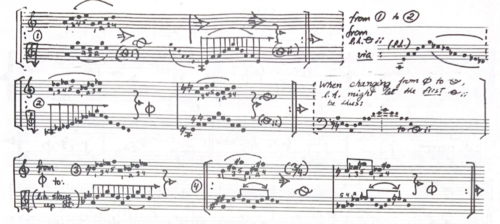
Lubomyr Melnyk collabore de temps en temps avec d’autres musiciens (pianistes, altistes, trombonistes ou violoncellistes) et compose pour eux mais c’est vraiment en solo que l’on peut apprécier toute sa puissance et originalité. Au fil des ans, des concerts et des enregistrements, Lubomyr Melnyk s’est imposé auprès d’un public jeune plus habitué à écouter de l’électro ou les épigones des grandes figures du minimalisme. Il lui reste encore à conquérir le public classique et contemporain qui met parfois trop longtemps à accepter la nouveauté : Glass, Reich et Pärt sont enfin prix au sérieux et sont octogénaires.
Ces derniers mois, les concerts ont repris pour Lubomyr Melnyk mais son coeur est déchiré par le conflit ukrainien, plusieurs vidéos en témoignent et quelques œuvres sont nées de cette terreur. Tout comme son compatriote Valentin Silvestrov, son langage des dernières années se fait moins radical, nettement plus lyrique et exacerbé. Face à l’horreur, Lubomyr Melnyk a ralenti ses doigts et ses notes pour laisser place au silence, à la colère verbale et à l’émotion.
François Mardirossian
Lubomyr Melnyk sera en concert au festival Superspectives, à Lyon le 17 juin prochain.
Quatre oeuvres à écouter en priorité :
The Voice Of Trees (1985)
Cette oeuvre pour deux pianos et trois tubas, utilise la technique du re-recording. Lubomyr s’enregistre une fois et rejoue sur ce qu’il vient de jouer; de même que le tubiste. Composée pour la Maison de la Danse de Lyon pour la chorégraphe Kilina Cremona.
Concert-Requiem (1984)
Composée pour piano et violon, ce long requiem est en hommage aux 7 millions de victimes de l’Holodomor, la grande famine subie par l’Ukraine entre 1931 et 1933
Illirion (2016)
“Beyond Romance” – 2016 (pièce pour piano typique de son style d’aujourd’hui au lyrisme étendu, tendre et enveloppant)
The Song Of Galadriel (1984)
Vaste fresque à la Melnyk s’inspirant de la mythologie du Seigneur des anneaux de Tolkien. Cette oeuvre regorge de moments extrêmement réussis, d’un élan mélodique sans pareil.)
Et pour aller plus loin, Pockets of Light (2013)



)
